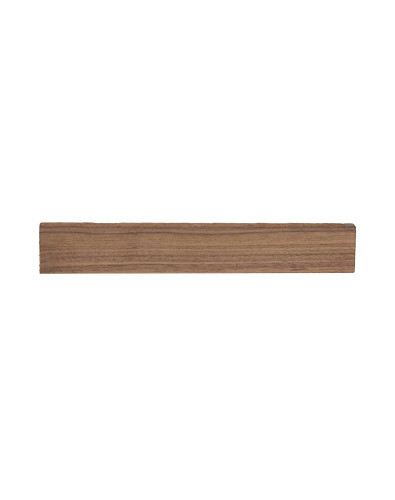American Walnut
If we compare American Walnut with other tonewood, this one is not the most used by luthiers. But that’s changing in the last years since they have discovered its great qualities. We could highlight the brilliant tonal response of this tonewood, apart from its elegant grain and tonalities of brown color.
American Walnut is also easy to work with and very sustainable, which makes it a perfect option with a good value for money.
About this part of the instrument, bridges need a good transmission of the sound and a high wear resistance. And American Walnut has these two proprieties, thanks to its stability, hardness and resistance, once it is dried. Get to know this perfect tonewood for your classic guitar bridge. It won’t let you down.
BOTANIC NAME: Juglans nigra
COMMON NAMES: Black walnut, American Walnut.
ORIGIN: United States and Canada.
DESCRIPTION: Heartwood can range from a lighter pale brown to a dark chocolate brown with darker brown streaks. Colour can sometimes have a grey, purple, or reddish cast. Sapwood is pale yellow-grey to nearly white. Grain is usually straight, but can be irregular. Has a medium texture and moderate natural luster.
RECOMMENDATIONS: Easy to work provided the grain is straight and regular. Glues, stain and finishes well. It is recommended to wear a face mask. Can cause eye and skin irritation.
DRYING: Drying process must be slow.
USES: Guitar backs and sides. Fingerboards.


